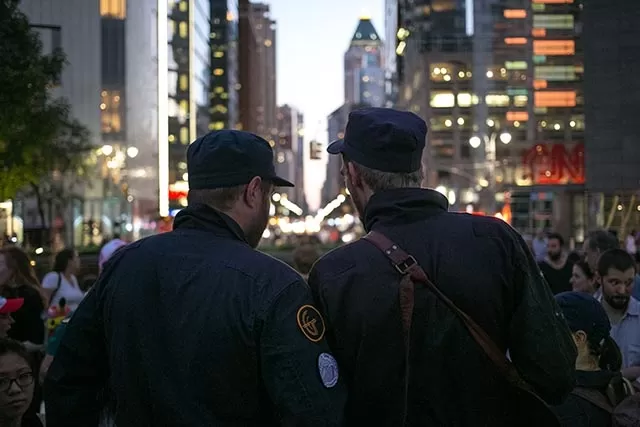
The Great Gotham Challenge has been creating immersive scavenger hunt inspired adventures, team building games, and fun challenges for nearly a decade. Here to share some of the wisdom they’ve gained over the years and the method behind creating great scavenger hunts are co-founders Jon Seale and Ryan Patch.
Ryan Patch: It really was a love of history, knowing about all these hidden places and places of historical significance in New York City, and wanting to show them to our friends that got us started making scavenger hunts. We wanted to share these things in a way that was more than just taking people by the hand and pointing; we wanted to allow them to discover these wonders for themselves. I took a couple New York City history classes in college and it was always really fun to read about something and then discover that the place where that happened in real life was now a Duane Reade or a Chase Bank or something like that, not one of those hyped up popular attractions. It made it seem like every inch of the city had something magical right below the surface, and I wanted to create an experience that would share that excitement, that treasure hunt, with others.
Jon Seale: Well, I always wanted to be a spy growing up, and ended up going into music instead, but that itch, feeling like you’re part of a real adventure, not just reading about something or watching it, not just being a passive consumer but actually being embroiled in this larger than life treasure hunt that is actually out there and possible to take part in, that’s something that I’ve been trying to scratch with the Great Gotham Challenge.
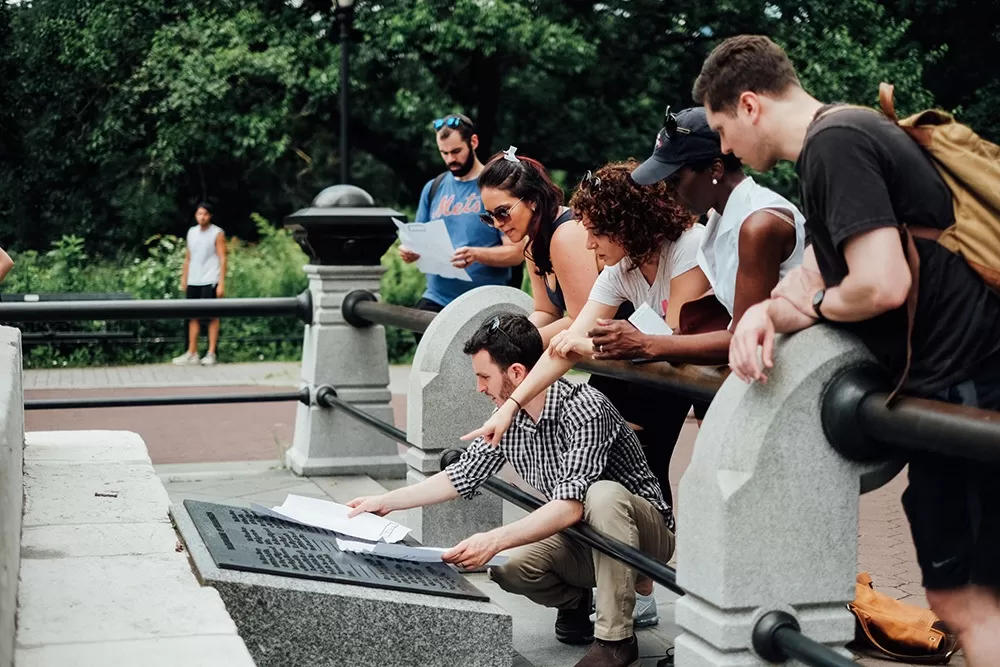
RP: I’d say there’s three things that make New York City great for a scavenger hunt. One is the density of the buildings, the people, and the history. You can change neighborhoods in a couple of blocks, and something interesting happened in each of those blocks, not just in notable places like Central Park or midtown Manhattan. There’s so much history built into the environment, and in New York scavenger hunts you can walk between that history very easily. The second is the historical nature of the city. In addition to its natural history, NYC has been actively developed as a trading hub for over 400 years, and there are layers of history based on who was controlling it, from the Lenape Native Americans to the Dutch to the British to briefly being the first capital of the United States. And in addition to all that, it has continued to be the trading hub of the eastern seaboard and continues to be the financial hub of the country, meaning that there are layers upon layers of history to be found in New York City, whether that’s economic, political, or cultural, and you don't have to go to the Metropolitan Museum to find it. And then third, we have the vibrancy of its citizens. You have so many colorful characters in New York: your subway musicians, your bodega workers, your Wall Street bankers, your politicians, your celebrities, Broadway singers, artists, students. The great part of New York is you can actually run into any of these people on the street. There’s a certain “we’re all in it together” character about the city where no one is insulated, and you can actually interact with any of them, and every one of them adds another color to the city’s canvas.
JS: Well when I think about scavenger hunts I think about a checklist of tasks that one has to do, like “find 12 license plates, each from a different state”, and a lot of times they feel like busywork or campy or corny, and it’s important to us that the Great Gotham Challenge not feel like that. We want people to really get the sense that they’re the protagonist, the main character in this treasure hunt adventure that’s unfolding all around them. And I think that’s why we give people more agency than other games that might be in a similar category. We leave the world really open, because that keeps the world feeling really real.
RP: We want people to feel like a secret city is coming alive for them, and that they’re not, as Jon said, being given a list of tasks, but instead being led through a sequence of hidden adventures and experiences, a series of improbable events that players can be the protagonists in.
JS: And I think one of the strengths of basing our games in real history is that there is a real adventure that you’re a part of, that is just the unfolding story of the world, and a lot of times we don’t recognize our part in that. The Great Gotham Challenge in one sense is a constructed adventure, but in another sense it’s placing you within and making you aware of a very real story that we didn’t construct, that’s the story of the city that you’re a part of.
RP: We prioritize experiences over puzzles or checklists, and we do this by integrating actors and immersive content into the challenge. For more premium scavenger hunt games, we want to make sure that players are routinely stepping into awe inspiring, luxurious locations, a secret city that they might never have seen before.
JS: We like to say that our scavenger hunt experience combines elements of immersive theater like Sleep No More, competition shows like the Amazing Race, the thrill of treasure hunts, and some of the best moments of escape rooms. We try to synthesize those things and create an experience that evokes them but is not like any of them.
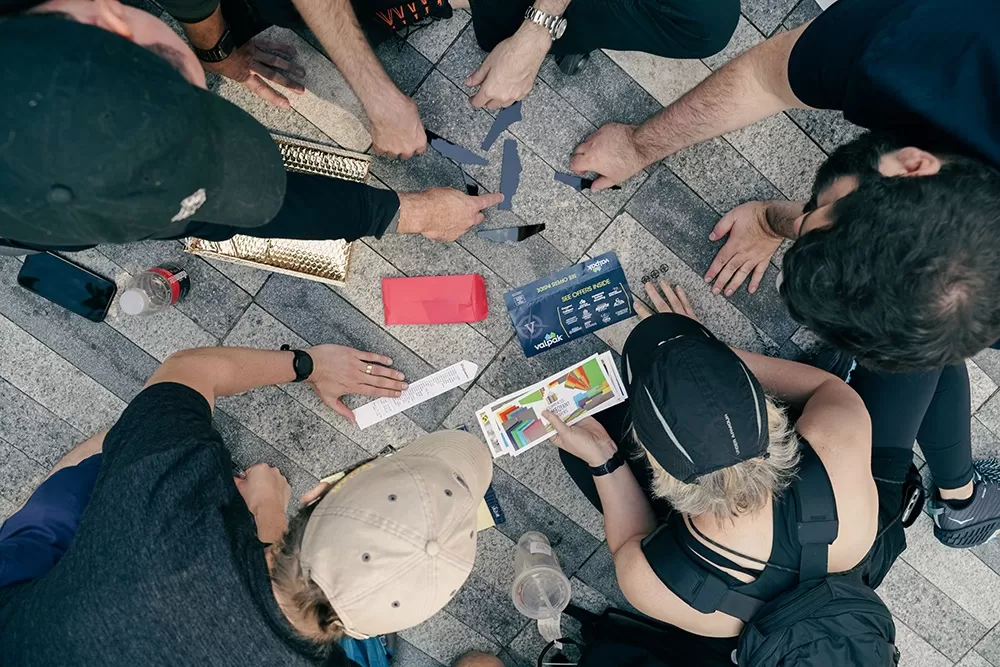
JS: Well Ryan and I both have training and experience in filmmaking, and we often approach each component of a GGC experience from the perspective of a film scene, thinking about some of our favorite moments in film and what makes them special, and how we can try to give the feeling that is created by that scene to the players that are playing our scavenger hunt. One component is that we want people to feel challenged, it is called the Great Gotham Challenge after all, and we feel that people have a greater sense of gratification and satisfaction if they feel like they’ve overcome an actual obstacle. Challenging people in a way that makes them feel smart and triumphant at the end of it is something that we always try to do with our experiences. It’s also really important to us to be able to surprise people and subvert their expectations, because when you’re able to surprise people you can take them from a world in which they are jaded or unfazed, and return them to that world of childlike wonder.
RP: You need to make sure that your scavenger hunt clues are hard enough that people feel accomplished for having bested them, but easy enough that they don’t give up. We let players use their smart phone and Google, because we believe that people should be able to use whatever resources they have available, and that enforcing artificial barriers kinda takes people out of the excitement of the moment, but we try to make our clues challenging even with that tool. This can be using anything from trivia about where they’re going to obfuscating what they’re supposed to do once they get there. We like using puzzles and character interactions as well to spice things up and give players another element to overcome.
JS: I think anything that patronizes the participant can lead to subpar scavenger hunts. Ways that people feel patronized are often through activities that feel like busywork or challenges that are so simple as to be demeaning. To put it another way, two of our core values at the Great Gotham Challenge are elegance and delight. The result of elegance is that players can trust the game designer, and if you don’t trust in the ability of the game designer to have done it well, then your investment in the treasure hunt diminishes. A lack of delight can sometimes result in a scavenger hunt being overengineered, or not considered from the perspective of the player. If a scavenger hunt is designed to make the creator feel smart, it may sacrifice delight. So those are two common pitfalls that we try to avoid.
RP: Jon summed it up well, but I would also add that circumstantial, random, luck-based tasks in a treasure hunt aren’t fulfilling because there’s no skill or ability involved in them. They give no sense of mastery, which is something that gives humans a lot of satisfaction. Adding an element that makes people work towards a goal that is not just circumstance helps a lot with this. We consider puzzles and tasks the keys that unlock new experiences, where experiences are the ultimate goal. It’s always more fun to walk through a locked door that you have the key to than walking through an open door, because there’s an air of exclusivity and mystery to it. So we view the parts of a scavenger hunt as not the whole of the quest, but as the tools to find that hidden locked door, and focusing too much on the keys can make you forget that the purpose is to get through the door in the first place.
JS: The purpose of a scavenger hunt is to get people out of the norm of their lives, to challenge people to do something that they haven’t done, consider something that they haven’t considered, take a risk, explore their city, step out of their daily schedule, work together, make core memories, encourage team building, and to have fun while doing all that. When you’re locked in an escape room, the world of the game is only 20 feet square, whereas we like to say that when we create our scavenger hunts we’re painting on the canvas of New York City and the benefit is that all the color and vibrancy of the city gets woven into our game. The grandeur of the architecture, the colorful conversations with denizens, the hustle and bustle, the sense that you and your team have access to a secret world that hundreds of pedestrians are walking right by, all combine to create this magical experience that’s not really replicable in any other city.
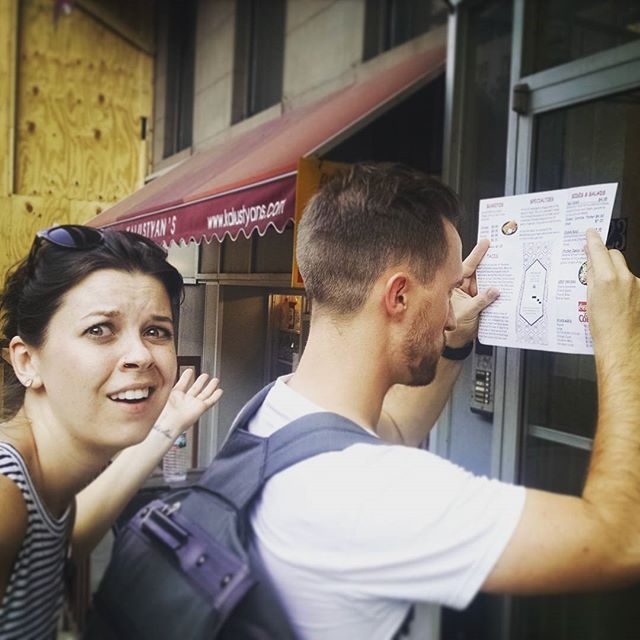
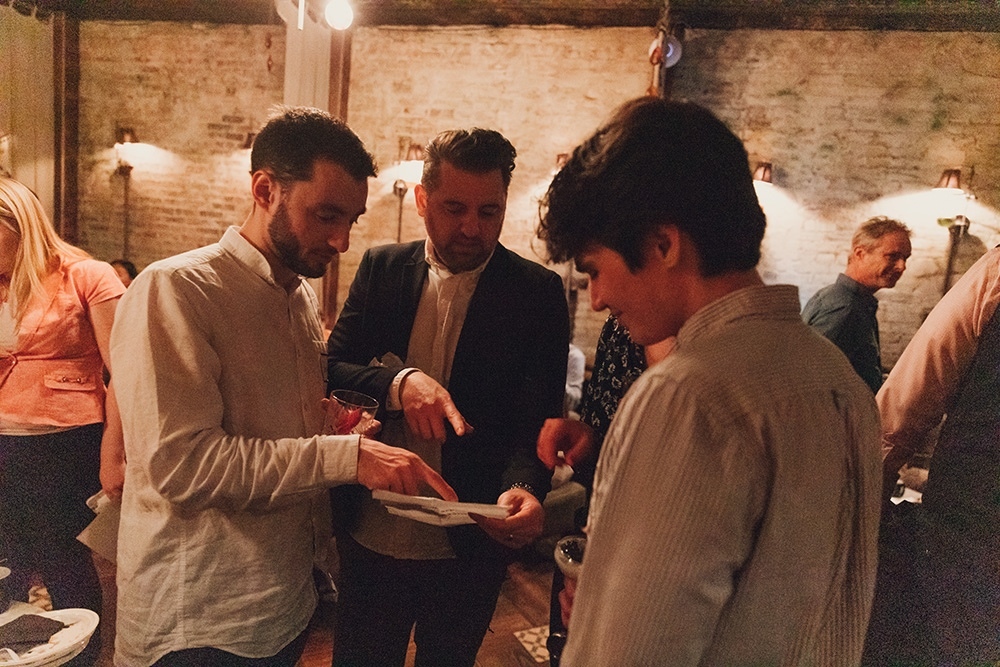
Great Gotham Challenge Recommends: Our Top 25 Favorite Team Building Activities- NYC
Team Building Activities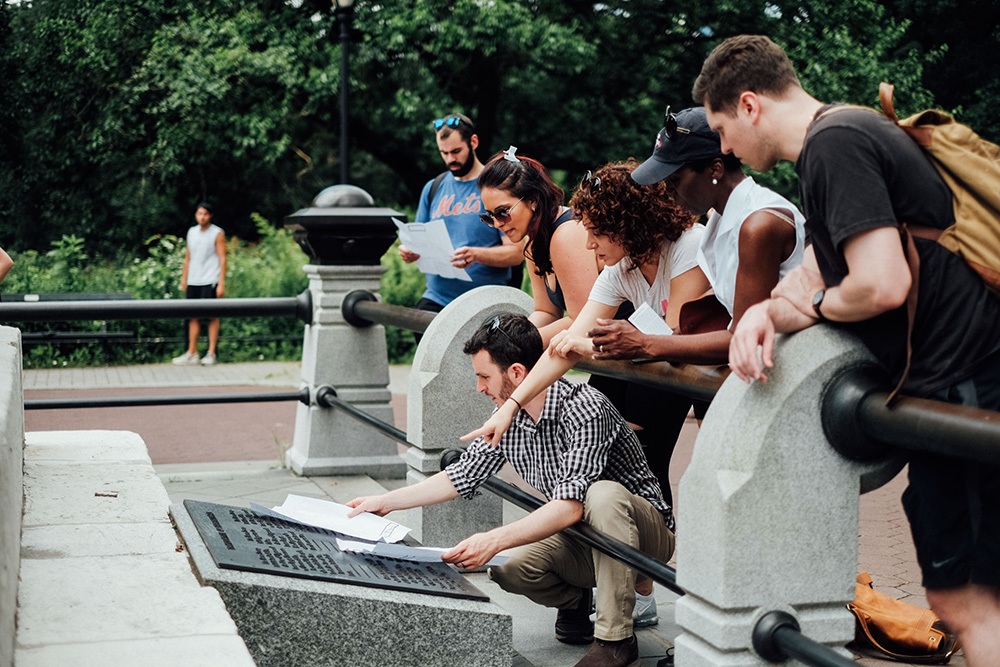
In this ultimate guide, we will take you through NYC's best corporate events.
Corporate Events In NYC
"We had high expectations and they were far exceeded. The challenges were difficult, extremely creative, and completely customized to our group. Suffice it to say our group couldn't have possibly had more fun. Thank you for making me look great!"
"I'm always very skeptical of these "team-building" events, but this one was over the top. They successfully handled our 120-person team, with puzzles that were really challenging. The whole experience couldn't have been more engaging!"
"One of our directors told me it was one of the best organized online challenges they've done."
"[The challenge] shattered any expectations I had. For a fully remote event, I expected a bit of cheesy fun, but the production quality is unbelievable. I absolutely recommend everyone to try it."
"To quote one of my teammates: "This [challenge] was mean and hard, and resultantly perfect." Thank you for the stellar experience, service, and fun."
"For a few hours, you get to feel like a secret agent as you traverse the mundane real world with a VIP pass for curated wonder."
"A mixture of live actors, custom puzzles, and clues built around pre-existing and famous structures in lends the event a sort of glam DaVinci Code energy."
To book our three most popular challenges for under 50 people:
Book InstantlyFor all other experiences or inquiries:
Get a quote






For advance notice on public events and special early bird discounts, please sign up for our communique below: